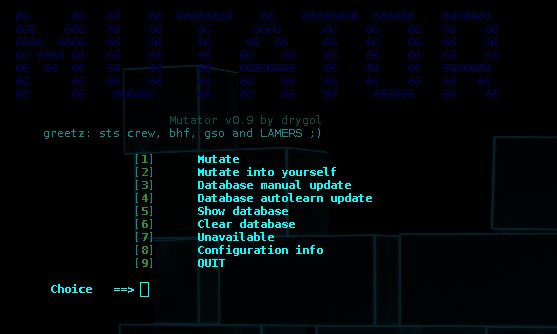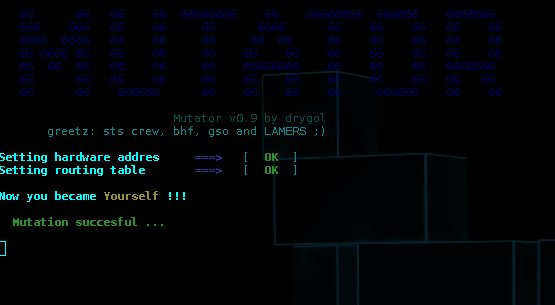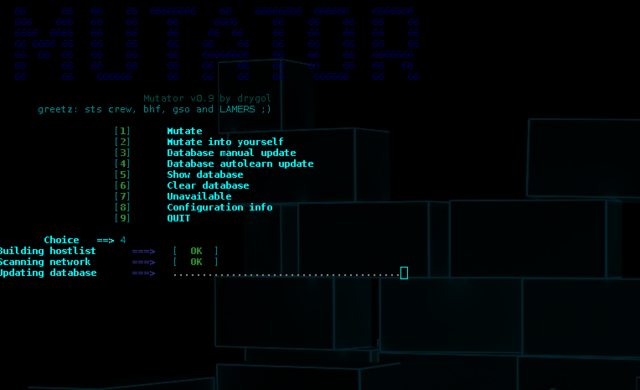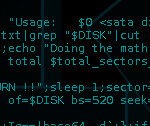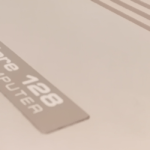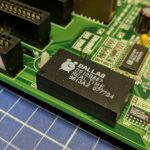… or retro bash scripts FTW!
Let’s start with an old (2008) photo of a week titled “We all love AIX” ;P

Yup, 16 GB of RAM in 2007 was quite a lot and still, it was hard to list files :>
How it all started
Well, this short post is about my early bash scripting straight from `99, so hopefully, it counts as retro 😉
Back in the ’90s, broadband internet access was rather rare and expensive. Local ISPs were on the top back then.
At that time I lived in an urban area rich in dull, concrete ten stories blocks to living in – a perfect ground for LANs.
Obviously, I wanted to have Internet access but I wanted to check it first. Me and my few other friends, I had a LAN built already – without the Internet but just for data sharing and gaming of course 😉
Of one these folks already bought access from a local ISP but since he also had RJ-45 leading straight to my flat, he could simply connect me through a 10Base-T HUB (anyone remembers these ? :P) so I could have a quick look at this ISPs network.
Bigger LAN
I’ve got myself access but Internetz wasn’t working … now what ?!
After a bit of research and lurking I’ve figured that there are around, 160 PC’s on a network connected through HUBs – no switching at all YAY!
Linux server worked as a router with SNAT.
Admin filtered access based on MAC address of client’s ethernet cards, so I was kinda unlucky … yeah kinda … :>
The Plan
The plan was super simple – to spoof legit ( already in routers DB ) MAC address combined with legit IP and take over his/her access.
It can be done very easily under Linux – you throw a few commands to a bash console and viola! it works!
However, in reality, it was not that simple. There were two problems to solve.
- database of legit MAC+IP addresses – targets
- easy and quick method to switch between ’em
A project Mutator was born.
Personally, I treated it as bash scripting training.
Also, I desperately wanted this tool to stay in one file so I could quickly transfer it everywhere or just simply copy & paste it.
The script is super lame (bloated interface to ifconfig lol) but keeps in mind that was `99 and I was doing my first steps in bash 😉
Here is a download link
Short walkthrough
When you first run it, the script checks if the last line of it is set to #FIRSTRUN. If yes, it asks a few configuration questions, like current MAC, IP, Gateway IP, and so on. After that, it replaces #FIRSTRUN with #RUNNED (yeah I know.. Engrish:) so when you relaunch it, it sets vars and jumps straight to a proper function inside the script.
Example config:

gw=10.0.7.254;eth=eno1;selfnet=10.0.7;selfip=10.0.7.81;selfmac=f2:cb:b3:34:5b:d1
- Mutate –
This is a menu where a script scans LAN with
fping and compares results with MACs+IP previously stored in a database – a set of subfunctions with config vars at the beginning of the file. Then you simply choose a target and mutate into it.
- Mutate into yourself –
This is where you can quickly configure your interface back to original settings – that is why the first run config is needed
- Database manual update –
Allows to manually add entries to DB - Database auto-learn update – scans LAN with fping then uses arping to get a MAC address of a target IP and writes results to DB
- Show database – shows entries stored during scans
- Clear database – clears DB
- Configuration info – displays a current config
As you can see this is quite a straightforward script flow. It boils down to scanning LAN for targets and waiting for targets to turn off their computers. Then you simply rescan LAN for those targets and mutate into them. Since their computers are offline you can spoof their MAC+IP and be accepted by the gateway as if you were a legit ISP client.
I did implement simple error handling but it is far away from alright. I didn’t bother to finish this project so if you wanna improve it you are on your own 😉
Mutator worked very nicely, especially when everyone went to sleep – plenty of targets. Also, administrators’ only way to catch you was to manually disconnect every RJ-45 from hubs scattered over 10-15 buildings so I was pretty safe. Some days later I finally joined that network too – at least officially …. and even became an admin of it a few weeks later.
That’s it, this is how one could get a free internetz in the ’90s 🙂
Cheers
OUTRO
If you want to get retro gear or hardware modules, please visit our shop
New products are being added every month.
Also, please support our work by spreading info about it.
Without your support, we simply cannot grow and we have a lot of new cool retro hardware (and more) products to come

